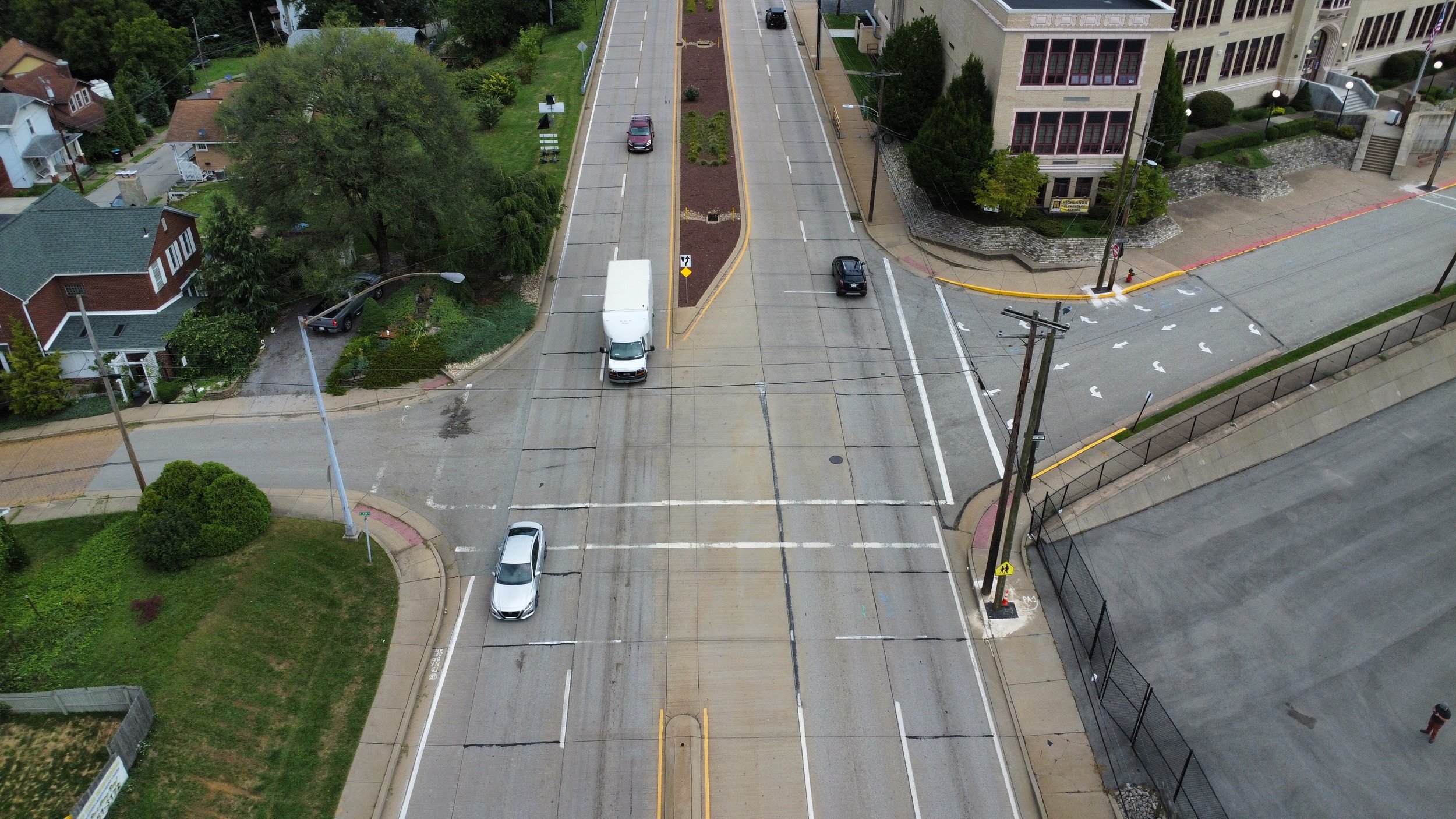Two Kids Sent to Hospital after Tarentum Crash
Crash
On August 2, sisters 14-year-old Alei Luther and 11-year-old Natalie Orr were at the park at the corner of 9th Avenue and PA 366 in Tarentum with their cousin, 15-year-old Riley Myers. As they crossed in the crosswalk on PA 366 to head home, a driver “came out of nowhere” and hit Alei and Natalie. Alei suffered a broken finger and a broken leg, which needed to have a metal rod surgically implanted. “I tried getting up because I saw Natalie on the ground,” she said. “Then, I tried to get up to get to her, but I couldn’t get up.” Natalie suffered a broken pelvis and several broken ribs, as well as a punctured lung. Riley, who was uninjured, immediately ran to the girl’s home to get their mother. “I thought [Natalie] was dead,” she said. According to Tarentum Police, the driver wasn’t speeding, and stayed at the scene of the crash. Alei has since showed signs of Post-Traumatic Stress Disorder, including recurring nightmares of the crash. “I can’t go back up there,” she said.
Context
PA 366 is a state-owned highway, maintained by PennDOT District 11. Originally functioning as a local road, it was turned into a state highway after the completion of the Tarentum Bridge in 1952. It was widened in 2007. Today it is five lanes wide. Since 2000, traffic levels have stayed fairly constant, averaging about 24,000 cars per day. The speed limit is 30 miles per hour. While the road isn’t scheduled for improvements, the bridge is on the regional Transportation Improvement Program (TIP), with improvements expected in 2029. Tarentum’s Borough Manager reports that they are working with PennDOT to make minor improvements at the intersection including a high-visibility crosswalk and pedestrian warning signs.
Countermeasures
The girls who were the victims of this crash did nothing wrong. They crossed where they were supposed to, and with no traffic control devices at the intersection, they have the right-of-way and should be yielded to. But the police report that the driver wasn’t speeding and didn’t suggest that they were planning on pressing charges, so for now it sounds like they did nothing wrong either. When two sets of people do nothing wrong, but one set of them still gets hurt, that means that the infrastructure is to blame.
PA 366 doesn’t match it’s setting. It’s next to a playground, a school, and a bunch of houses, but its wide lanes and generous geometry are designed like a highway, and encourage drivers to treat it like one. There are really only two ways to go with this: either turn it into a true grade-separated highway, where it won’t interact with its surroundings in a way that could injure kids, or turn it into a local street that is designed so that it’s actually safe for kids to interact with. Turning it into a highway would cost millions of dollars, but would provide a chance for the surrounding street grid to be reconnected. A depressed highway would cause the fewest issues, but the geometry would be complicated with the bridge approach. An elevated highway presents new challenges. While physically connected, it could effectively cut off one half of Tarentum from the other (similar to what 366 does today), and would introduce issues we see along elevated highways, like pollution and adverse health effects.
Turning 366 into a safe surface road isn’t something PennDOT would like to do, because it reduces throughput. Fewer lanes, more controlled intersections, and shorter or nonexistent turn lanes could lead to traffic backups at peak times. But you know what I say to that?
The people of Tarentum shouldn’t be expected to get a chunk of their town out of the way just so that drivers can go through it faster. When drivers pass through Tarentum, they should act as guests, and while guests are more than welcome to come by, they are expected to play by the house rules when they visit. A guest that comes to your house, demanding that you cater to them at your own expense, and acts entitled is unlikely to be invited back again. And we shouldn’t force the people of Tarentum, or any community for that matter, to deal with entitled drivers.
Tarentum is a small community. The stretch of 366 between East Freeport Road and the Tarentum Bridge is only slightly over 1,000 feet. In that minor stretch, drivers should drive slowly, probably 25 miles per hour or less. They should expect to stop and wait their turn for pedestrians and drivers crossing the street. They should be buffered from pedestrians and cyclists by rows of trees.
It can do this and still handle its traffic without being as wide as it is. A number of streets in the region (Leechburg Road in Lower Burrell, Allegheny Avenue in Oakmont, Carson Street in Pittsburgh) handle similar numbers of cars with two or three lanes. These smaller streets, with lower speeds, are a much better match for the land uses around 366. In addition, with a reduced width, lower speeds, and more controlled intersections, you can introduce traffic calming elements, like curb extensions or raised intersections, to further increase pedestrian safety and comfort.
Contacts
PennDOT is responsible for PA 366, and they will only consider changes to one of their facilities when they get a written request from a municipality. Borough Manager Dwight Boddorf has already expressed an interest in improving the street, but the minor improvements to a specific crosswalk he has so far discussed aren’t bold enough to transform 366 as a whole. Even the changes proposed by the family of the injured girls, of putting up a stop sign at the intersection, while it could have prevented this specific crash, wouldn’t lead to improved safety along the entire corridor. Mr. Boddorf can be contacted at (724) 224-1818 extension 115 or via email here.



